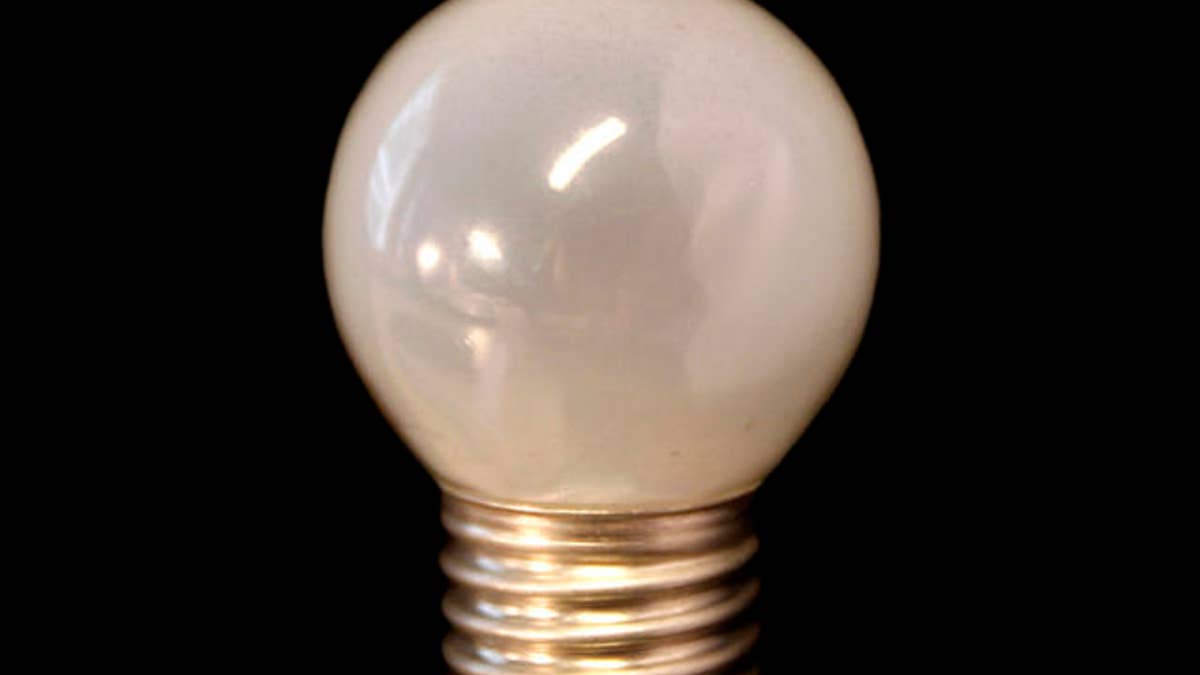
An older style frosted 60 watt incandescent bulb is seen in Brussels, Tuesday Sept. 1, 2009. The EU on Tuesday began making the transition from power-draining lightbulbs to more energy efficient ones. The new EU rules follow an agreement reached by the 27 EU governments last year to phase out the traditional incandescent lightbulb over three years starting this year to help European countries lower greenhouse gas emissions. The older lightbulbs will be replaced by halogen or long-life fluorescent bulbs. (AP Photo/Virginia Mayo) (AP)
Is the traditional 100-watt incandescent light bulb about to go the way of the Tyrannosaurus Rex?
Some Republicans on Capitol Hill hope not.
They want to overturn the Energy Independence and Security Act of 2007, signed by then-President George W. Bush. The law requires all 100-watt incandescent light bulbs to be almost 30-percent more energy efficient by Jan. 1, 2012.
Since that means higher production costs, manufacturers in America have stopped making the traditional bulbs. Some consumers have already started stockpiling the old-model bulbs, complaining that the replacements cast a unattractive light compared to the warmth of incandescent bulbs.
Kentucky Republican Sen. Rand Paul told an administration official at a recent hearing that it's "insulting" for the government to tell consumers what light bulbs they can buy, because the government believes it “know[s] what’s best for me.”
South Carolina Sen. Jim DeMint said in a statement that, "Americans are fully capable of choosing the best way to light their own homes and what best fits the needs and budget of their families ... it's clear the 'nanny state' mentality has gotten out of control in Washington."
The costs per bulb will be higher. A 100-watt incandescent bulb now costs about 60-cents. A more energy-efficient Compact Fluorescent Light bulb costs about $3.40.
But since the new bulbs can last 6 to 10 times longer, industry supporters of the new regulations say this will benefit consumers.
Kyle Pitsor with the National Electrical Manufacturers Association contends that “your operating cost over time is cheaper and you're keeping money in your pocket.”
He says Americans still will be able “to buy an incandescent technology, it won’t be the same as today's technology it will be more efficient, and it will result in lower energy bills.”
But one of the House GOP opponents of the legislation says families don't want to pay more for light.
Texas Republican Congressman Joe Barton said in a recent hearing that “it's not necessary and we don't think it makes any economic sense at all.”
Barton also says the new bulbs pose a health risk because they contain small amounts of mercury.
The Environmental Protection Agency has posted a list of clean-up instructions, in case one of the compact fluorescent bulbs breaks:
--Have people and pets leave the room
--Air out the room for 5-10 minutes
--Shut off the heating/air-conditioning system
--Be thorough in collecting broken glass and visible powder
--Place cleanup materials in a sealable container
--Put all bulb debris and cleanup materials outdoors in a trash container or protected area
--Continue to air out the room where the bulb was broken
--Leave the heating/air conditioning system shut off for several hours.
You can still find the traditional incandescent bulbs on some store shelves. For now.
The last plant that made them in the U.S. moved its light bulb operation to China in September.




